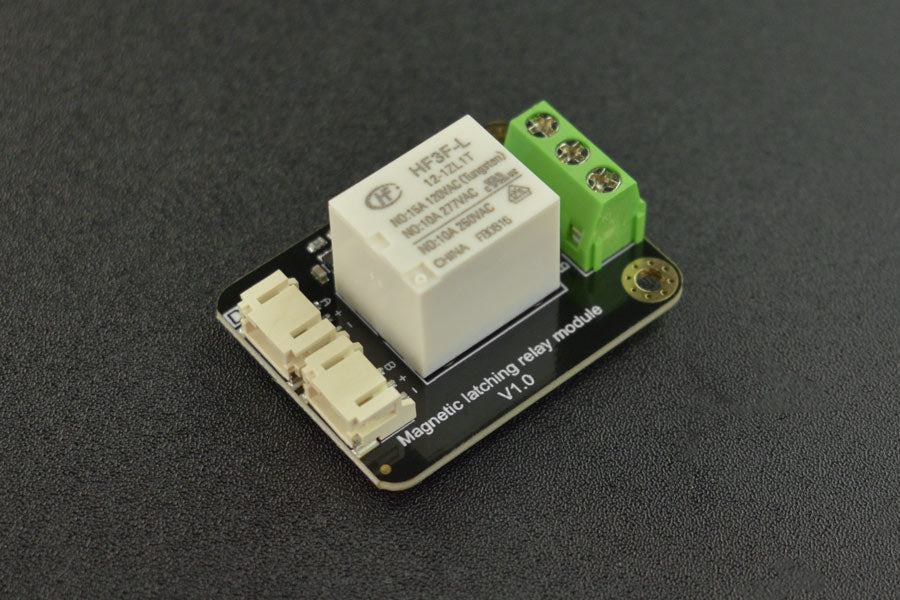
Gravity: Magnetic Latching Relay for ESP32 / Arduino
422 units will be available shortly.
A Magnetic latching relay is a new type of relay. It features low power dissipation and noiseless. Unlike other non-latching relay, the latching relay needs two digital pulse signal to switch ON/OFF state.
This DFRobot Gravity: magnetic latching relay is compatible with most popular microcontrollers such as esp32 / Arduino / Raspberry Pi. It can be used to remake home appliances or lighting controls, like smart electricity meters, lighting, sockets, switches, and so on.
What is Magnectic latching relay?
It is also an automatic switch. A latching relay remains in the last position it was when last powered, whereas a non-latching relay will return to its typical position. Therefore, this relay plays the role of a memory circuit. It is also known as bistable, keep impulse or lockup relay.
A latching relay helps to reduce power dissipation in the application circuit because the coil does not need to be energized all the time. But a non-latching relay needs to be energized all the time. Therefore, a non-latching relay consumes more power compared to a latching relay.
The latching relay has noiseless switching for maximum comfort in household applications. Non-latching relay hums when they are operating.
The magnetic latching relay features low power, steady performance, long service life, and low-temperature rise. It is perfect for applications requiring low power and high stability.
Latching or Non Latching Relay?
It depends. The decision between latching relay vs. normal relay should be made based on the application’s requirements. For example, if power consumption is an issue and noise levels must remain low, latching relays are the way to go.
However, for situations where a short time delay is needed, non-latching relays might be more economical. That’s because these relays generally cost less.
Ultimately, it is up to the designer to decide if a latching or non-latching relay is needed, and how to implement in the system. Depending on the application, there may be more than one type of relay that could work. Therefore, careful consideration must be given when making the choice.
Features
Applications
Specification
Documents
Shipping List
The Gravity: Magnetic Latching Relay for ESP32 / Arduino appears in the following collections:
